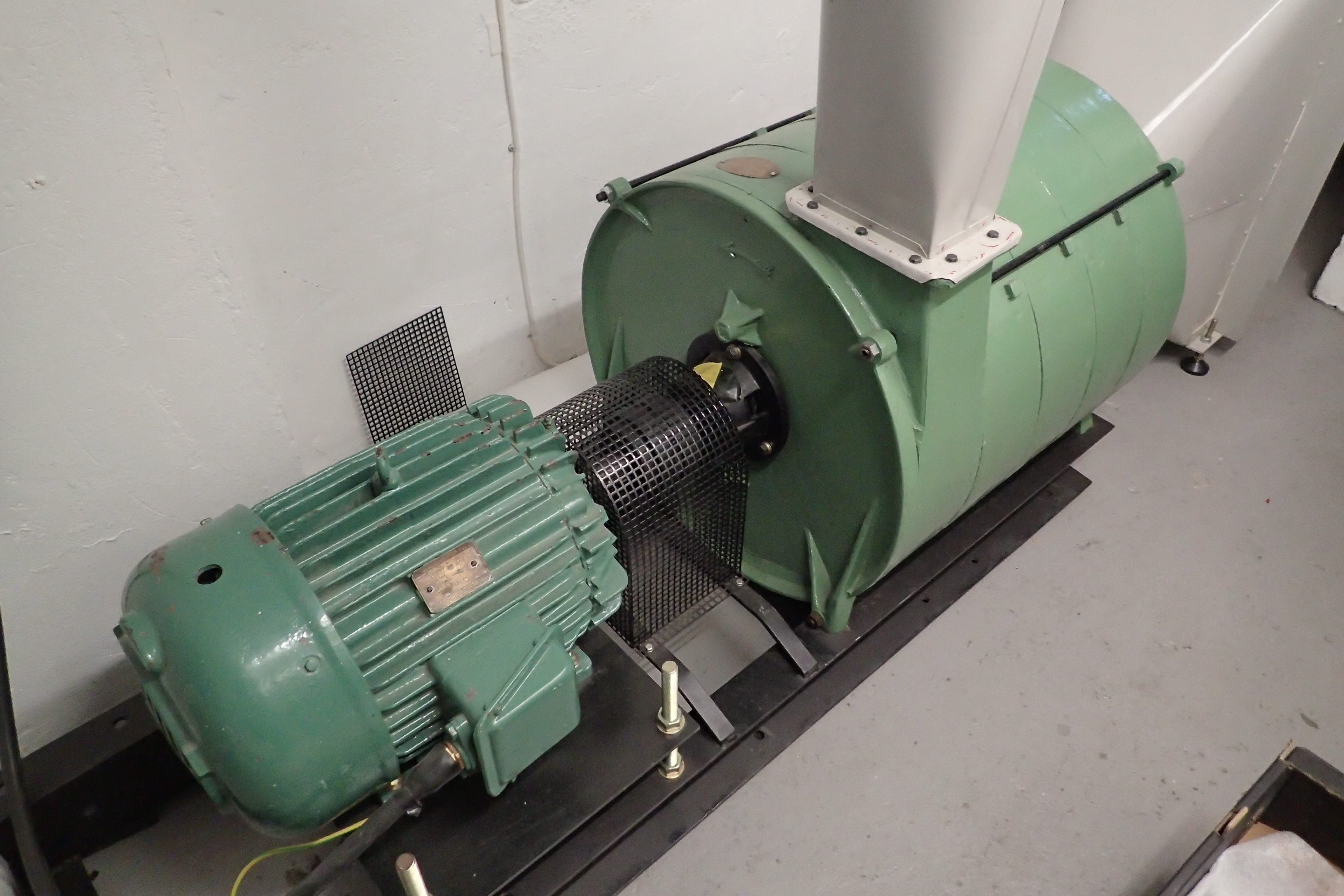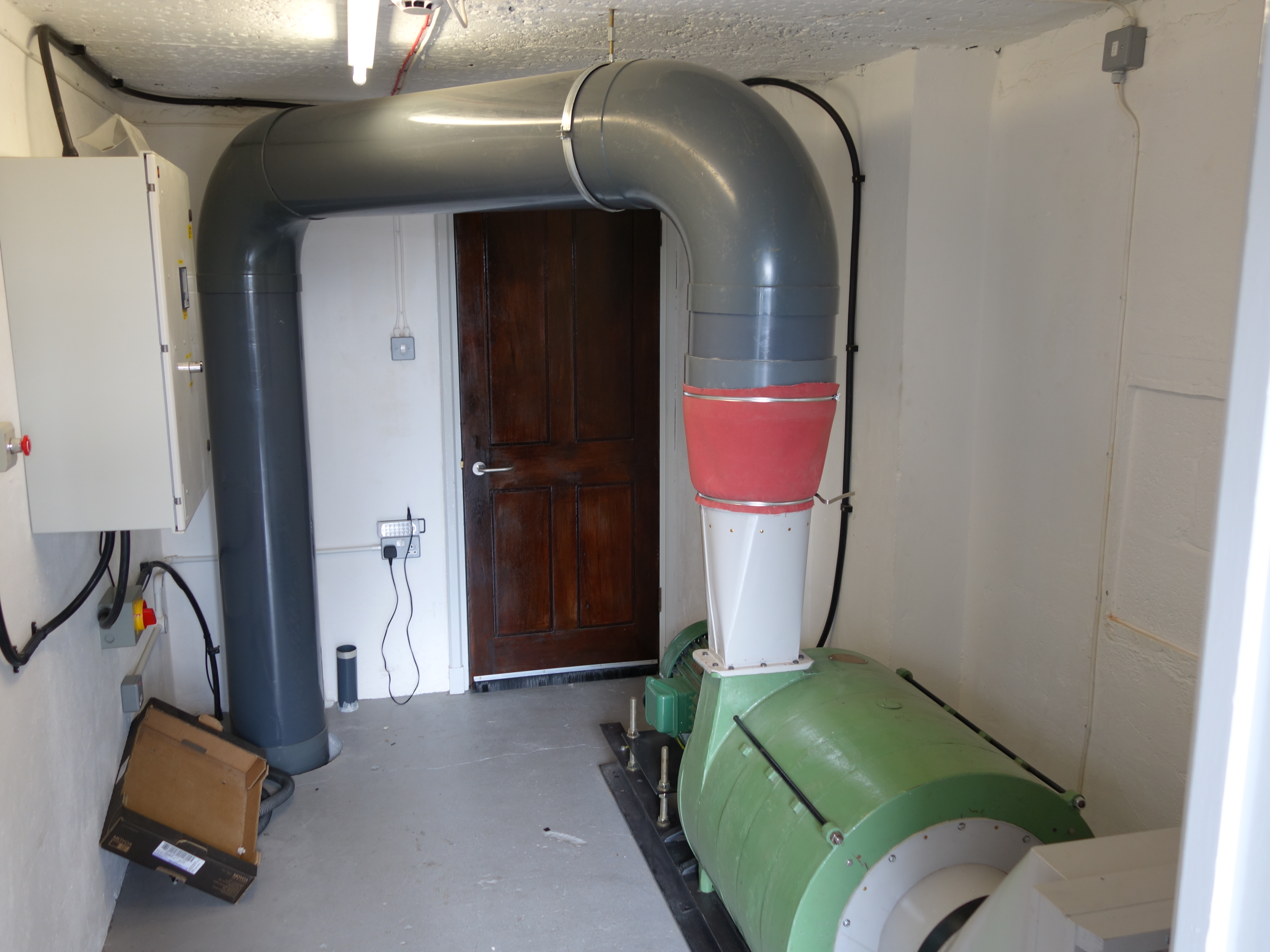
The mechanical device that draws in air at atmospheric pressure and raises it to a suitable pressure for use in the organ (see “Wind“). Usually, the blower is placed outside the chamber because of the background noise and rumble it inevitably produces.
The centrifugal blowers used on theatre organs consist of a number of rotating impellers (‘stages’) on a common shaft, driven by an electric motor. There is a housing around the impellers that includes vanes (sometimes termed ‘diffusers’) to redirect wind from the outside of each stage to the inside of the next stage. The air is then flung outwards by the next impeller and the process repeated depending on the number of stages in the blower. For theatre organs, this can be 3, 4 or 5 stages; the impeller diameter is usually somewhere between 20 and 28 inches and the motor speed 1440 rpm. Some blowers are belt- rather than direct-driven, and may run at a higher speed. The delivery pressure is a function of impeller speed and the number of stages.

The output pressure, for successful theatre organ work, should be 50% over the highest pipe pressure – if (for example) the organ has a Tuba on 15″ w.g. (water gauge) then a blower output pressure of 22 1/2″ w.g. would be required. This is a critical factor in obtaining good tremulation, but equally should not be too high as this will make the task of the regulators more difficult.
A filter is fitted on the blower air intake and an anti-surge valve in the output line to the chambers.
The most common British manufacturers supplying theatre organ builders were Watkins and Watson (“Discus”), Rockingham and Dain (“Duplex”). In the USA, a major supplier was the Spencer Turbine company (“OrgoBlo”) – some of these units came to the UK as well, especially with some of the earlier Wurlitzer imports. Interestingly, Watkins and Watson in the UK and Spencer in the USA are still trading, having outlasted their main organbuilding customers of the 1920’s and 1930s by many decades.
